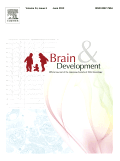
BRAIN & DEVELOPMENT
Scope & Guideline
Illuminating Pathways in Developmental Neurology
Introduction
Aims and Scopes
- Pediatric Neurology and Epilepsy:
The journal extensively covers various aspects of pediatric neurology, particularly focusing on epilepsy, its treatment, and the underlying mechanisms of seizure disorders. - Neurodevelopmental Disorders:
Research related to neurodevelopmental disorders such as autism spectrum disorders, cerebral palsy, and genetic syndromes is a core area, providing insights into diagnosis, management, and long-term outcomes. - Genetic and Biochemical Studies:
The journal emphasizes the role of genetic and biochemical factors in pediatric neurological diseases, including studies on mutations, biomarkers, and their implications for treatment. - Neuroimaging Techniques:
Innovative neuroimaging techniques and their applications in understanding brain development and pathology are frequently featured, enhancing the diagnostic capabilities in pediatric neurology. - Clinical Management and Therapeutics:
There is a strong focus on clinical studies that evaluate treatment efficacy, safety, and management strategies for various neurological conditions affecting children. - Epidemiological Research:
Epidemiological studies that assess the prevalence, risk factors, and outcomes of neurological disorders in pediatric populations are integral to the journal's scope.
Trending and Emerging
- Genetic and Genomic Medicine:
There is a marked increase in studies focusing on genetic mutations and their implications for pediatric neurological disorders, showcasing a trend towards precision medicine and personalized treatment strategies. - Neuroinflammation and Immune-Mediated Disorders:
Research on neuroinflammatory processes and immune-mediated neurological disorders, such as autoimmune encephalitis, is gaining traction, reflecting a broader understanding of the interplay between the immune system and the nervous system. - Innovative Therapeutic Approaches:
Emerging themes include novel therapeutic methods, such as the use of cannabinoids and gene therapies, which are becoming more common as potential treatment options for refractory epilepsy and other neurological conditions. - Longitudinal and Outcome-Based Studies:
There is an increasing emphasis on longitudinal studies that track the long-term outcomes of pediatric neurological conditions, enhancing the understanding of prognosis and the impact of early interventions. - Neuroimaging Advancements:
Advancements in neuroimaging technologies and methodologies are being increasingly explored, helping to elucidate the underlying mechanisms of various neurological disorders and improving diagnostic accuracy.
Declining or Waning
- Traditional Neurological Disorders:
Research on more common and traditional pediatric neurological disorders, such as simple febrile seizures or classic migraine, seems to be less frequently published, possibly due to a shift towards more complex cases and genetic studies. - Basic Neurological Assessments:
There is a noticeable reduction in studies focused solely on basic neurological assessments and examinations, as more sophisticated and comprehensive methodologies gain preference in research. - Chronic Conditions without Genetic Focus:
Chronic neurological conditions that do not have a clear genetic basis or innovative therapeutic approaches are receiving less attention, as the field moves towards precision medicine and genetic insights.
Similar Journals
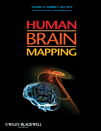
HUMAN BRAIN MAPPING
Connecting knowledge to clinical practice in neuroscience.HUMAN BRAIN MAPPING, published by Wiley, is a premier journal in the field of neuroscience, devoted to comprehensively advancing understanding of brain structure and function through innovative mapping techniques. With an impressive impact factor and ranked in the Q1 category across multiple relevant disciplines—including Anatomy, Neurology, and Radiology—this journal is recognized as a vital resource for researchers and professionals passionate about the complexities of the human brain. Founded in 1993 and continuously publishing groundbreaking research, HUMAN BRAIN MAPPING is essential for those looking to stay at the forefront of developments in anatomical and neurological research. Though it does not currently offer Open Access options, the journal remains committed to disseminating high-quality research that influences clinical practices and academic inquiry. Its esteemed position within Scopus highlights its significance; charting at the top percentiles across various medical and health fields serves as a testament to the critical contributions made by the authors and researchers involved. As it converges toward 2024, HUMAN BRAIN MAPPING continues to be the go-to platform for publishing pivotal insights into the intricacies of brain mapping methodologies and applications.
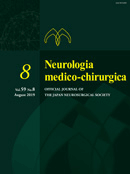
NEUROLOGIA MEDICO-CHIRURGICA
Unlocking the Future of Neuroscience and SurgeryNEUROLOGIA MEDICO-CHIRURGICA, published by the JAPAN NEUROSURGICAL SOCIETY, stands as a vital resource in the fields of neurology and surgery, featuring an impressive track record since its inception in 1959. With both an ISSN 0470-8105 and E-ISSN 1349-8029, this journal has embraced an Open Access model since 2000, ensuring that cutting-edge research and clinical advances are readily accessible to a global audience. The journal is currently ranked in the Q2 quartile for Neurology (clinical) and the prestigious Q1 quartile for Surgery as of 2023, highlighting its impact within these disciplines. With Scopus rankings placing it at #145 in Surgery and #206 in Neurology, NEUROLOGIA MEDICO-CHIRURGICA continues to play a crucial role in advancing medical knowledge, making it an indispensable reference for researchers, clinicians, and students alike. The journal's broad scope encompasses both clinical neurology and surgical techniques, positioning it at the forefront of interdisciplinary collaboration in the ever-evolving field of neurosurgery.

Annals of Indian Academy of Neurology
Bridging Knowledge Gaps in Indian NeurologyAnnals of Indian Academy of Neurology is a premier open access journal dedicated to advancing the field of Neurology, serving as a vital resource for researchers, healthcare professionals, and students since its inception in 2006. Published by the esteemed Wolters Kluwer Medknow Publications, this journal has established itself within the academic community, boasting a Q3 quartile ranking in clinical neurology according to the 2023 category quartiles and a Scopus rank placing it in the 35th percentile among 400 comparable journals. With a focus on clinical advancements and research innovations in neurology, the journal aims to disseminate high-quality and impactful studies that address the complex challenges faced in the neurological landscape, particularly within the Indian context. The open access model ensures that the latest research is readily accessible to a global audience, thereby promoting collaboration and knowledge sharing within the neurosciences.

Noropsikiyatri Arsivi-Archives of Neuropsychiatry
Illuminating the Complexities of NeuropsychiatryNoropsikiyatri Arsivi-Archives of Neuropsychiatry is a prominent scholarly journal dedicated to advancing knowledge in the fields of neuropsychiatry and mental health. Published by the Turkish Neuropsychiatry Association, this journal aims to disseminate high-quality research that contributes to a deeper understanding of psychiatric disorders, innovative treatment modalities, and interdisciplinary approaches in neuroscience. Based in Turkey, the journal has been in circulation since its inception, with a rich history reflecting its commitment to addressing contemporary issues in mental health care. It is currently indexed under Scopus, with notable rankings in both Psychiatry and Mental Health (Rank #378/567, 33rd Percentile) and General Neuroscience (Rank #97/113, 14th Percentile), highlighting its increasing relevance and impact in the academia. Although it is not currently an open access journal, its contributions remain vital for researchers, professionals, and students who wish to stay abreast of the latest developments and research in neuropsychiatry.
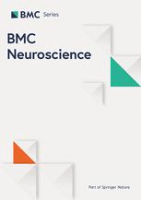
BMC NEUROSCIENCE
Unlocking the Mysteries of the Brain, One Study at a TimeBMC NEUROSCIENCE is a prominent open access journal dedicated to the dissemination of high-quality research within the dynamic and rapidly evolving field of neuroscience. Published by BMC, a well-respected leader in open access publishing, this journal facilitates the free exchange of knowledge since its inception in 2000. With the ISSN 1471-2202, BMC NEUROSCIENCE aims to address the diverse interests of the neuroscience community by covering a broad spectrum of topics, ranging from cellular and molecular neuroscience to general neurological studies, thus appealing to researchers, professionals, and students alike. Although it currently holds a Q4 ranking in Cellular and Molecular Neuroscience and a Q3 rank in miscellaneous Neuroscience categories, its commitment to advancing the understanding of brain function and disorders remains steadfast. The journal features a user-friendly Open Access model, ensuring that critical research findings are readily accessible to everyone, fostering collaboration and innovation in the field. As the journal continues to evolve towards its convergence years of 2024, it aspires to enhance its impact and global reach, making it a valuable resource for anyone interested in advancing neuroscience research.
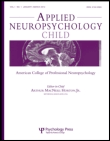
Applied Neuropsychology-Child
Illuminating the path to cognitive and behavioral insights.Applied Neuropsychology-Child is a leading academic journal dedicated to advancing the field of developmental and educational psychology, as well as neuropsychology, with a particular focus on child development. Published by Routledge Journals, Taylor & Francis Ltd, this journal provides critical insights into the cognitive and behavioral aspects of children, fostering interdisciplinary dialogue among researchers, clinicians, and educators. With a commendable impact factor and a categorization of Q3 in both associated fields for 2023, the journal plays a pivotal role in shaping current practices and enhancing academic discourse. Access to Applied Neuropsychology-Child is available through subscription, ensuring that high-quality research is disseminated widely amongst scholars and professionals. Since its inception in 2012, this journal has consistently aimed to illuminate the challenges and developments in child neuropsychology, making it an essential resource for anyone invested in the psychological well-being and educational success of children.

Journal of Pediatric Neuropsychology
Bridging research and clinical practice for young minds.Journal of Pediatric Neuropsychology is a pioneering academic journal dedicated to advancing the field of pediatric neuropsychology. Published by SpringerNature, this journal serves as a vital platform for researchers, clinicians, and students aiming to explore the complexities of neuropsychological development in children. With ISSN 2199-2681 and E-ISSN 2199-2673, the journal focuses on a broad spectrum of topics including cognitive processes, neurological disorders, and the impact of neuropsychology on educational and therapeutic practices. Though currently not listed as an Open Access journal, it aims to disseminate knowledge that influences clinical practices and supports interdisciplinary collaboration. The Journal of Pediatric Neuropsychology stands out for its commitment to enhancing understanding within this specialized field, making it an essential resource for professionals and researchers dedicated to improving outcomes for children with neuropsychological challenges.

ANNALS OF NEUROLOGY
Unveiling Breakthroughs in Neurological DisordersANNALS OF NEUROLOGY, published by Wiley, stands as a leading journal in the field of neurology, renowned for its rigorous peer-reviewed articles that contribute significantly to the understanding of neurological disorders and advances in clinical practices. With an impressive impact factor and ranked Q1 in both neurology and clinical neurology categories, this journal positions itself among the top repositories of cutting-edge research, indexed in Scopus with exemplary ranks in the 98th and 97th percentiles respectively. Since its inception in 1977 and with a commitment to excellence extending to 2024 and beyond, ANNALS OF NEUROLOGY aims to disseminate groundbreaking studies and foster dialogue within the academic community, making it an essential resource for researchers, healthcare professionals, and students dedicated to neurology. Although it does not currently offer open access, its accessibility through institutional subscriptions facilitates widespread scholarly engagement.

Egyptian Journal of Neurology Psychiatry and Neurosurgery
Advancing Knowledge in Neurology, Psychiatry, and NeurosurgeryEgyptian Journal of Neurology Psychiatry and Neurosurgery, published by Springer, is a premier open-access journal that has been dedicated to advancing the fields of neurology, psychiatry, and neurosurgery since its inception in 2009. With an E-ISSN of 1687-8329, this journal aims to provide a dynamic platform for researchers and clinicians to disseminate their findings, fostering a rich dialogue on the latest developments and innovations within these critical disciplines. With an impactful open-access model adopted since 2018, the journal attracts a global audience, facilitating the exchange of knowledge and ideas across various medical and scientific landscapes. In the 2023 rankings, it holds impressive positions within the Q3 category for Neurology (clinical), Psychiatry and Mental Health, and Surgery, as well as Q4 in Miscellaneous Neuroscience, highlighting its value within the field. As a valuable resource for both budding scholars and seasoned professionals, the Egyptian Journal of Neurology Psychiatry and Neurosurgery offers insights that drive progress in the treatment and understanding of neurological and psychiatric conditions.

PEDIATRIC NEUROSURGERY
Shaping the Future of Pediatric NeurosciencePediatric Neurosurgery is a vital academic journal dedicated to the exploration and advancement of neurosurgical practices in pediatric populations. Published by Karger in Switzerland, this journal spans a rich history dating back to its inception in 1955, with continuous contributions enhancing our understanding of child neurosurgery up to 2024. With an ISSN of 1016-2291 and an E-ISSN of 1423-0305, it currently holds a reputable position in the Q3 quartile for various medical categories, including Medicine (miscellaneous), Neurology (clinical), and Pediatrics. Despite its lack of Open Access options, this journal serves as a critical resource for researchers, clinicians, and students engaged in pediatric neurosurgery, offering insightful studies, groundbreaking clinical practices, and the latest advancements in the field. As the journal continues to develop and explore new methodologies, it remains an essential platform for disseminating significant findings that shape the future of pediatric neuroscience.